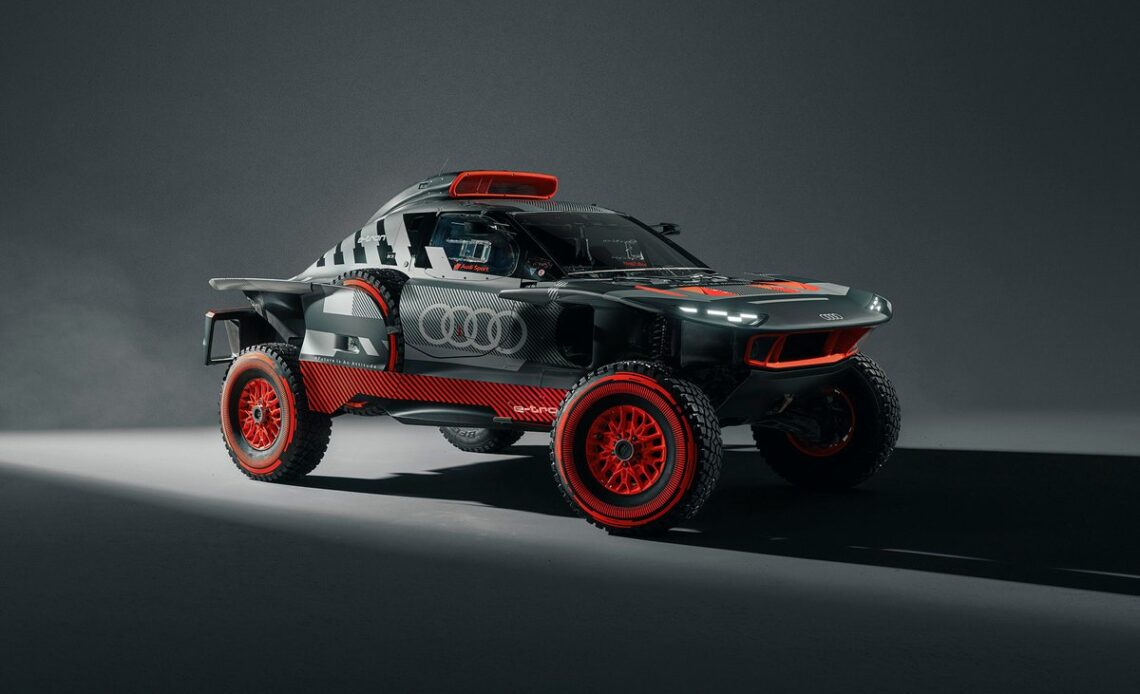Audi became the first major manufacturer to embrace Dakar’s new T1U regulations for electric and hybrid cars earlier this year when it entered a trio of RS Q e-trons for Stephane Peterhansel, Carlos Sainz and Mattias Ekstrom.
Despite the scale of challenge involved, Audi’s maiden outing the Saudi Arabia-based rally-raid was largely a success, yielding four stage wins and a spot inside the overall top 10.
However, the car it had developed in a record time was not without its shortcomings, and was notably more than 200kg heavier than the minimum weight requirement of 2000kg.
This was largely due to a complex powertrain system, which included two electric motors, a petrol engine connected to an energy converter, and a battery pack.
The German manufacturer acknowledged the consequences a heavy car has on driveability and agility and made it a key area of focus while developing the updated Audi RS Q e-tron E2 model for 2023.
This has helped bring the car closer to the updated minimum weight limit of 2100kg and hence more competitive against its lighter petrol-powered rivals from Toyota and Prodrive.
Speaking after the launch of Audi’s overhauled Dakar contender, project manager Benedikt Brunninger revealed that shaving weight off the car became the marque’s priority immediately after it wrapped up its maiden outing in Dakar in January.
“The major [weight saving] thing was done by the bodywork,” he explained. “We also looked into the car with every small point where we can.
“We had an excel sheet with 12 or 13 pages where we had all the parts written down to where we could gain some grams there, some grams here.
“But from the outside the main weight loss is coming from the bodywork. So [that includes] the reduction of double surfaces we had on the last car.
“The last car was also mainly influenced by our design crew and this year we said we need consequently to reduce the weight. Therefore, we reduced all double surfaces and also looked into the material itself of the parts.
“There are also different carbon fibre materials that you can use and as we gain a lot of data and experience from the first Dakar we knew where the carbon parts need to be rigid and where they are not, so we could use different materials to lower the weight of each part there.”
Audi RS Q e-tron E2
Photo by: Audi Communications Motorsport
Fourteen-time Dakar winner Peterhansel tested the overhauled Audi RS Q e-tron E2 in August and will complete further running…
Click Here to Read the Full Original Article at Motorsport.com – RALLY – Stories…

